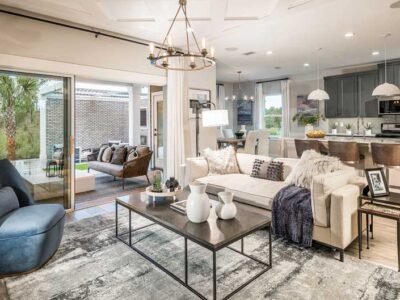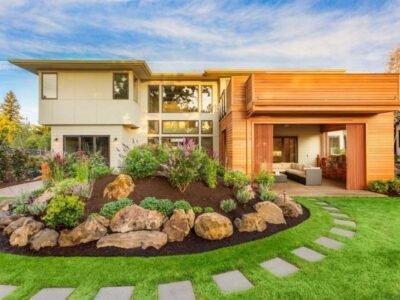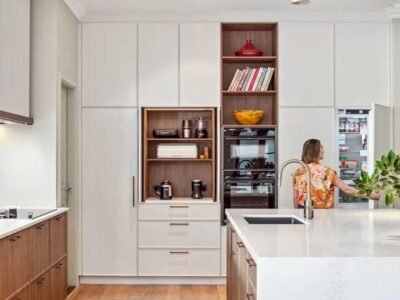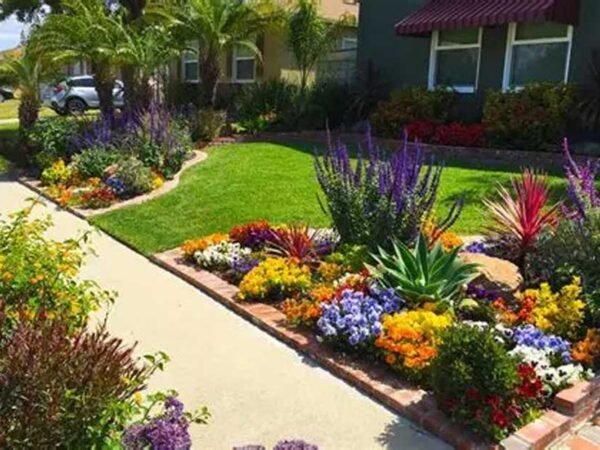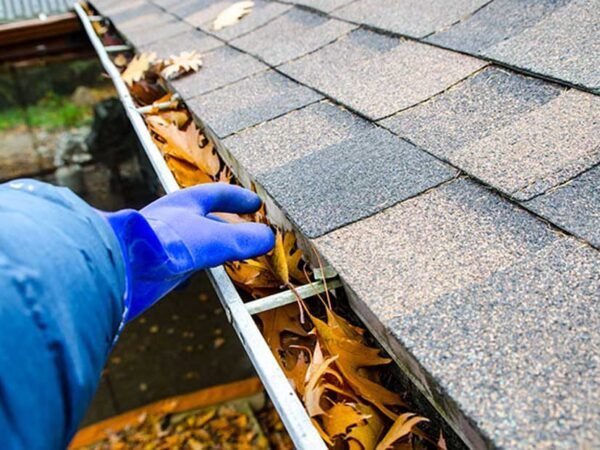A patio cover can transform an outdoor area into a comfortable, stylish retreat that’s usable throughout the year. Whether you enjoy relaxing outdoors with a morning coffee or entertaining friends on the weekends, the right patio cover not only offers protection from the sun and rain but also adds value and visual appeal to your home.
However, not all materials perform equally. The key to a durable, attractive, and low-maintenance patio cover lies in choosing the right material for your climate, budget, and lifestyle.
In this guide, we’ll explore the best materials for long-lasting patio covers, their pros and cons, and how to choose the one that fits your needs best.
Why the Right Material Matters
The material you choose for your patio cover affects more than just appearance. It determines how much maintenance your patio will need, how well it stands up to weather, and how long it lasts before requiring repairs or replacement. Materials like wood, aluminum, steel, and vinyl each offer different benefits and trade-offs.
Homeowners in areas with intense sun exposure, such as Nevada or Arizona, may prefer heat-reflective or UV-resistant options. In contrast, those in regions with frequent rain or humidity might prioritize rust resistance and moisture protection. Taking your local climate into account ensures your patio cover remains beautiful and functional for many years.
1. Wood Patio Covers
Wood is one of the most traditional and aesthetically pleasing materials for patio covers. It brings a natural warmth and timeless charm to outdoor spaces, easily blending with different architectural styles.
Advantages:
- Aesthetic appeal: Wood creates a cozy, organic look that enhances curb appeal. It can be stained or painted to match your home’s exterior.
- Customizable: It’s easy to shape and cut into custom designs, allowing homeowners to achieve unique patterns and decorative touches.
- Structural strength: Solid woods such as cedar, redwood, or pressure-treated pine offer durability and stability.
Disadvantages:
- Maintenance: Wood requires regular sealing, staining, or painting to prevent rot, insect damage, and fading.
- Weather sensitivity: Exposure to moisture or extreme heat can cause warping or cracking over time.
- Cost: High-quality wood can be expensive, especially when factoring in long-term maintenance.
Best for: Homeowners seeking a natural look and willing to perform routine maintenance.
2. Aluminum Patio Covers
Aluminum is one of the most popular modern options for patio covers, and for good reason. It’s lightweight, highly durable, and requires little upkeep compared to wood.
Advantages:
- Weather-resistant: Aluminum won’t rust, warp, or crack, making it ideal for both humid and dry climates.
- Low maintenance: No painting or sealing is required, and occasional cleaning is enough to keep it looking new.
- Versatility: Aluminum covers can be designed to mimic the look of wood or other materials while offering superior longevity.
- Affordability: Generally more cost-effective than wood or steel.
Disadvantages:
- Heat retention: In extremely hot climates, aluminum can absorb and radiate heat, making covered areas warmer.
- Less natural appearance: Although newer finishes improve aesthetics, aluminum may still lack the organic charm of real wood.
Best for: Homeowners looking for an affordable, low-maintenance solution that lasts for decades.
3. Vinyl Patio Covers
Vinyl patio covers have gained popularity thanks to their affordability, versatility, and ease of maintenance. They are made from PVC (polyvinyl chloride), which is resistant to moisture and UV rays.
Advantages:
- Low maintenance: Vinyl never needs painting or sealing and can be cleaned with simple soap and water.
- Weather-resistant: It stands up well to sun exposure, humidity, and rain without rotting or rusting.
- Aesthetic flexibility: Available in various colors and designs, vinyl can replicate wood textures while maintaining durability.
Disadvantages:
- Limited color options: Vinyl can’t be painted easily, so you’re limited to the manufacturer’s color selection.
- Structural limitations: It may not be as strong as metal or wood and can warp in extreme heat.
- Lifespan: While durable, it may not last as long as aluminum or steel in harsh conditions.
Best for: Homeowners who want a cost-effective, maintenance-free option that still offers aesthetic appeal.
4. Steel Patio Covers
Steel patio covers are a top choice for homeowners prioritizing strength and longevity. They are typically made from galvanized or powder-coated steel, offering unmatched durability.
Advantages:
- Exceptional strength: Steel can withstand heavy loads, strong winds, and severe weather better than most materials.
- Fire resistance: Unlike wood or vinyl, steel is non-combustible and offers added safety.
- Longevity: With proper maintenance, steel patio covers can last 40 years or more.
- Modern appearance: Powder-coated steel provides a sleek, contemporary look.
Disadvantages:
- Cost: Steel is among the more expensive options.
- Maintenance: Although rust-resistant, it may still need periodic inspections and touch-ups to prevent corrosion.
- Weight: Heavier than aluminum or vinyl, steel covers require sturdy support structures and professional installation.
Best for: Homeowners seeking superior strength and long-term durability with a modern design.
5. Fabric and Retractable Covers
For those who prefer flexibility, fabric or retractable patio covers are excellent choices. They provide shade and comfort when needed and can be retracted to enjoy open sunlight.
Advantages:
- Flexibility: Extend or retract the cover depending on weather and preference.
- Aesthetic variety: Available in numerous colors, fabrics, and patterns.
- Affordability: Generally less expensive than permanent structures.
Disadvantages:
- Maintenance: Fabric requires periodic cleaning and may fade or tear over time.
- Durability: Not as long-lasting as wood, metal, or vinyl.
- Weather limitations: Not ideal for areas with strong winds or heavy rain.
Best for: Homeowners who want a temporary, adjustable shade solution for seasonal use.
Choosing the Right Material for Your Climate
Selecting the right material depends heavily on your local climate. In hot desert regions like Las Vegas, aluminum or steel patio covers often outperform wood or vinyl. These materials withstand intense UV exposure and high temperatures, maintaining their strength and appearance for years.
If you live in Las Vegas and are considering Patio Enclosures Las Vegas options, aluminum is often the best choice. It reflects heat, resists fading, and requires very little maintenance, perfect for the desert climate where it stays cool and maintains a clean, modern look season after season.
If you live in a coastal or humid area, vinyl might be a better choice since it resists moisture, salt air, and rust. Meanwhile, steel remains a strong option for homeowners facing storm-prone conditions or those looking for a contemporary, high-strength structure.
Energy Efficiency and Comfort
Modern patio cover materials can also improve comfort and energy efficiency. Insulated aluminum panels, for instance, not only provide shade but also reflect radiant heat, keeping both your patio and adjacent indoor spaces cooler. Some advanced vinyl systems also include UV-blocking technology to reduce heat buildup and protect furniture from fading.
Adding ceiling fans, outdoor lighting, or built-in heaters can further enhance comfort, extending the usability of your outdoor area year-round. Combining functional design with durable materials results in an inviting and energy-efficient outdoor space.
Maintenance Tips for Longevity
Regardless of the material you choose, proper maintenance ensures your patio cover lasts as long as possible.
- Inspect regularly: Look for signs of rust, rot, or loose connections at least twice a year.
- Clean surfaces: Remove dust, leaves, and debris that can trap moisture or cause stains.
- Touch up finishes: Repaint or reseal wood and steel when necessary to maintain protection.
- Lubricate moving parts: For retractable covers, keep joints and mechanisms clean and well-oiled.
Consistent care extends the lifespan of your investment and keeps it looking as good as new.
Final Thoughts
The best material for your patio cover ultimately depends on your environment, aesthetic preferences, and maintenance tolerance. Wood offers timeless beauty but demands upkeep. Aluminum provides durability and ease of maintenance.
Vinyl delivers affordability and weather resistance. Steel stands out for strength and longevity, while fabric covers offer flexibility for those who prefer adjustability.
Whichever material you choose, investing in a quality patio cover is one of the best ways to enhance your outdoor living space. It offers comfort, shade, and protection while boosting your home’s overall appeal and value. With thoughtful selection and regular care, your patio cover can remain a centerpiece of outdoor enjoyment for decades to come.


